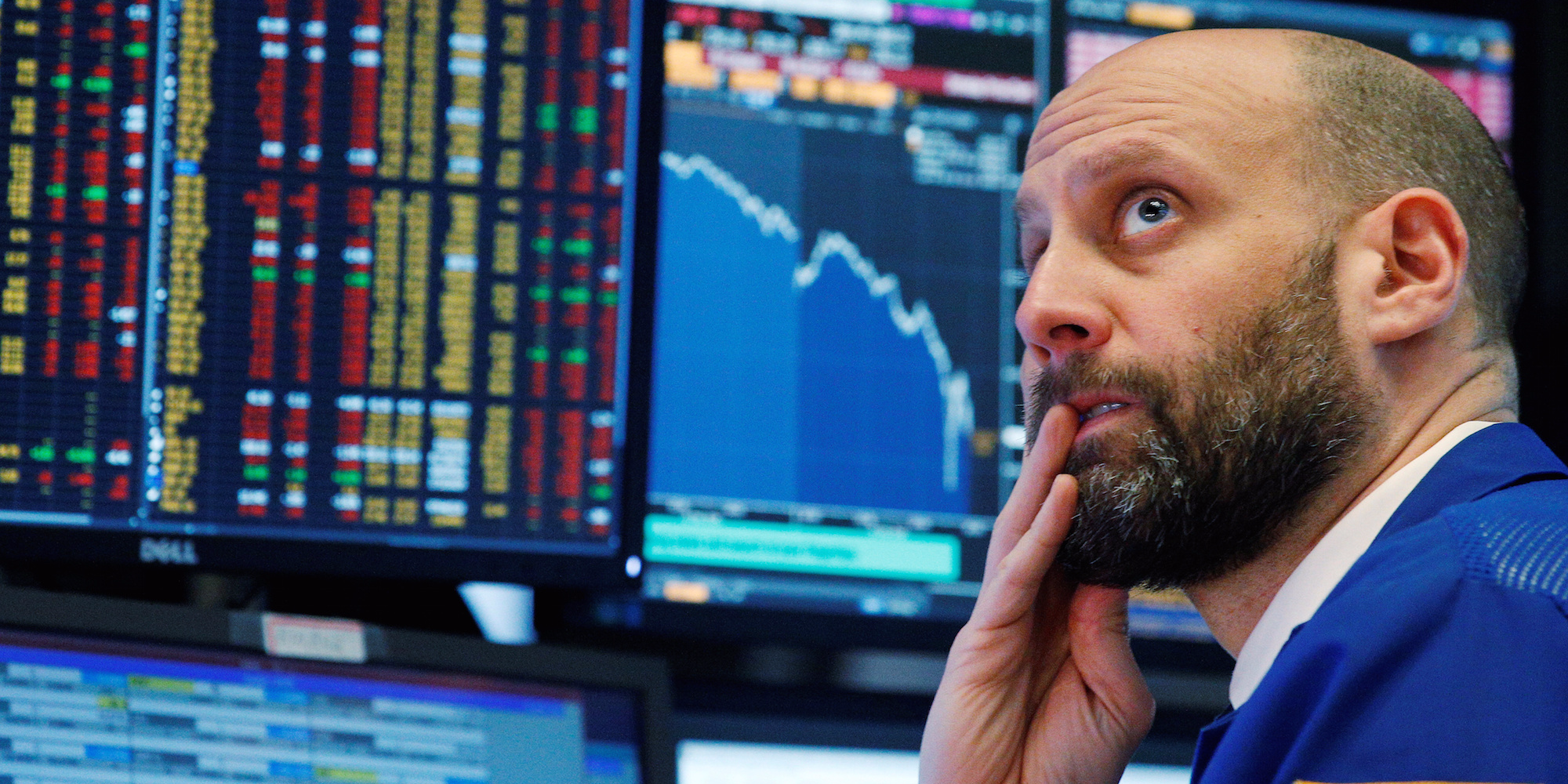- On Monday, the curve inversion between 3-month and 10-year US Treasury bond yields fell to its most negative point since October amid concern over the coronavirus outbreak.
- The yield on the 10-year US Treasury fell to 1.3% as prices rallied, below the 3-month US Treasury at 1.5%.
- “Investors are pretty pessimistic about future US GDP growth and interest rates,” Dev Kantesaria of Valley Forge Capital Management said in an interview with Markets Insider.
- Read more on Business Insider.
A popular recession indicator just flashed its most serious warning in months amid worry around the coronavirus outbreak.
The yield curve inversion between 3-month and 10-year US Treasury bonds fell on Monday to its most negative point since October. An inverted yield curve has preceeded all US recessions since 1950.
A flight to safety amid mounting fears that the coronavirus will slow global growth sent 10-year US Treasury yields plummeting to 1.3% Monday, below the 3-month yield of 1.5%. The 30-year yield also slipped to 1.8%, a historic low.
“That’s pretty remarkable, as it shows that investors are pretty pessimistic about future US GDP growth and interest rates,” Dev Kantesaria, a portfolio manager and founder of Valley Forge Capital Management, said in an interview with Markets Insider.
The bond market is now pricing in two interest rate cuts from the Federal Reserve, even though it said it plans to leave rates unchanged this year. As the virus has spread, it's infected nearly 80,000 people and killed more than 2,600 across 30 countries, sparking fears of a global pandemic.
If the outbreak continues and does hinder global growth, the US economy could take a hit. On Monday, Goldman Sachs lowered its US GDP growth forecast by 0.2 percentage points amid coronavirus worry. Global stocks tanked Monday as concerns over the virus' spread mounted. The Dow Jones Industrial Average fell more than 1,000 points, and the S&P 500 and the Nasdaq pared losses.
If US economic growth is impacted, or the country falls into a recession, long-term interest rates could approach zero, Kantesaria said. "If investors can look past the current market, the low interest rate environment is highly bullish for equity investors," he said.
But that might not happen right away, he said. In the near term, "it could get quite scary in the marketplace," Kantesaria said.

